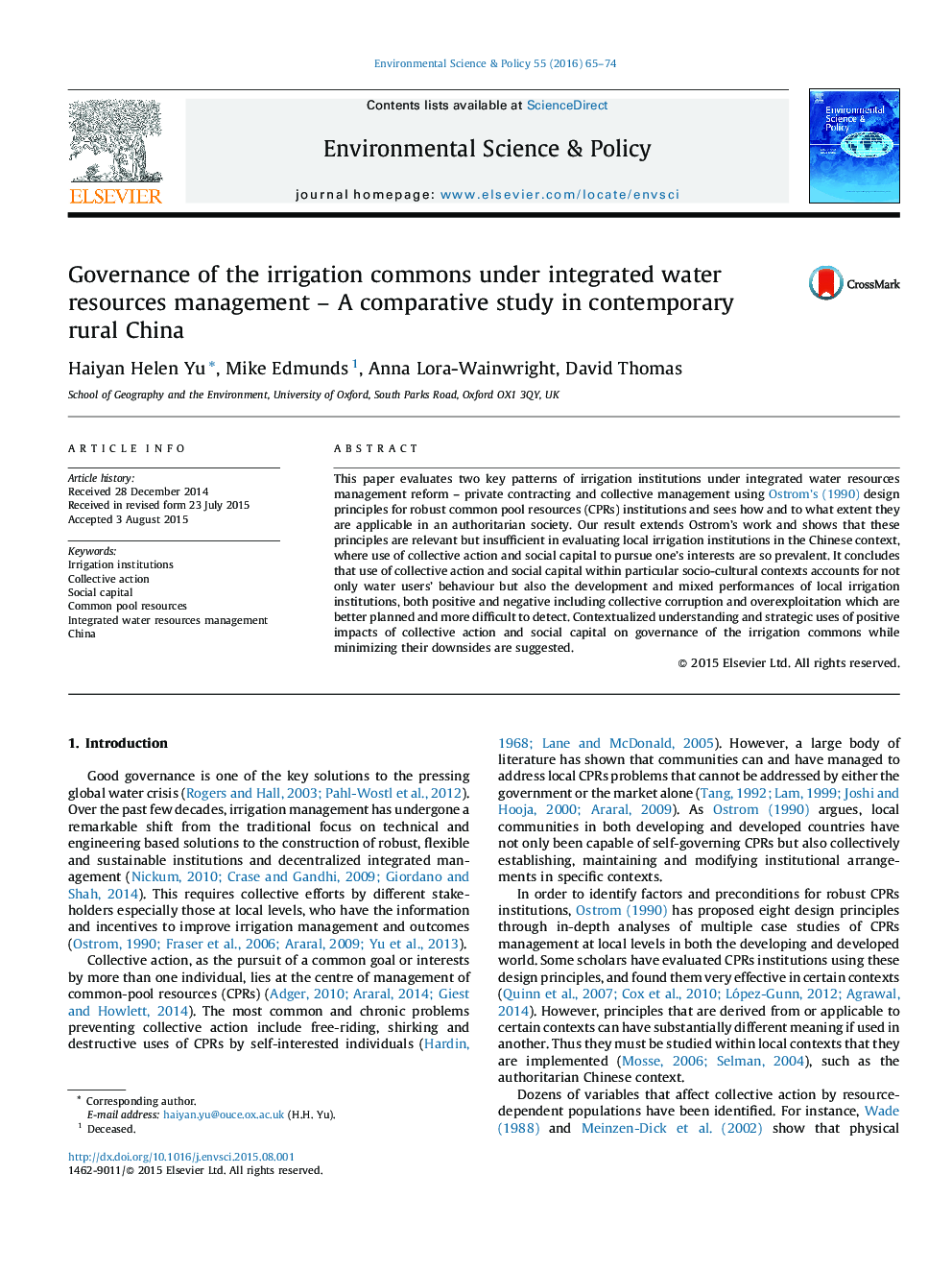| Article ID | Journal | Published Year | Pages | File Type |
|---|---|---|---|---|
| 10504552 | Environmental Science & Policy | 2016 | 10 Pages |
Abstract
This paper evaluates two key patterns of irrigation institutions under integrated water resources management reform - private contracting and collective management using Ostrom's (1990) design principles for robust common pool resources (CPRs) institutions and sees how and to what extent they are applicable in an authoritarian society. Our result extends Ostrom's work and shows that these principles are relevant but insufficient in evaluating local irrigation institutions in the Chinese context, where use of collective action and social capital to pursue one's interests are so prevalent. It concludes that use of collective action and social capital within particular socio-cultural contexts accounts for not only water users' behaviour but also the development and mixed performances of local irrigation institutions, both positive and negative including collective corruption and overexploitation which are better planned and more difficult to detect. Contextualized understanding and strategic uses of positive impacts of collective action and social capital on governance of the irrigation commons while minimizing their downsides are suggested.
Keywords
Related Topics
Physical Sciences and Engineering
Energy
Renewable Energy, Sustainability and the Environment
Authors
Haiyan Helen Yu, Mike Edmunds, Anna Lora-Wainwright, David Thomas,
